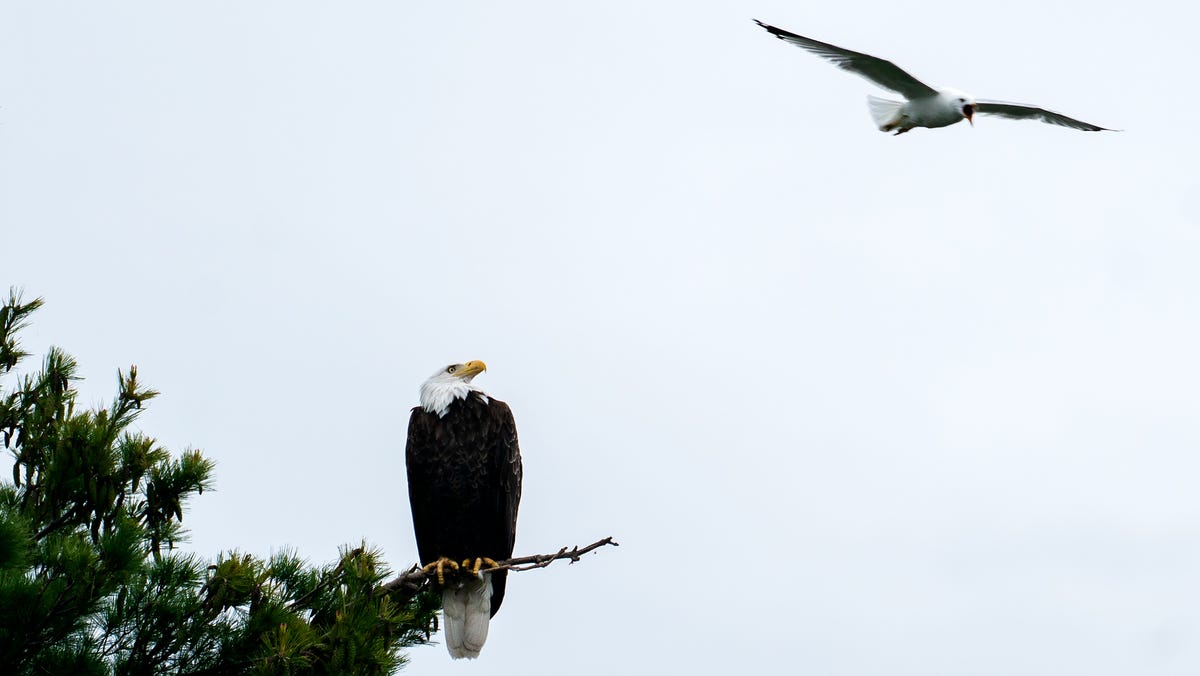Dino Grandoni
| The Washington Post
The Trump administration announced proposals Wednesday to roll back protections for plants and animals under the Endangered Species Act, a bedrock environmental law credited with rescuing the bald eagle, American alligator, peregrine falcon and numerous other species from extinction.
The proposed changes to the way the half-century-old law is enforced come as part of President Donald Trump’s effort to reduce regulatory red tape and expand U.S. fossil fuel production, which often occurs in the habitat of birds, insects and others animals at risk of vanishing. The Interior Department said the Biden administration overreached when enacting its own protections for endangered species.
“This administration is restoring the Endangered Species Act to its original intent, protecting species through clear, consistent and lawful standards that also respect the livelihoods of Americans who depend on our land and resources,” Interior Secretary Doug Burgum said in a statement. “These revisions end years of legal confusion and regulatory overreach.”
The proposed rules “will ensure federal wildlife agencies get a truer picture of local environmental and economic conditions” when making decisions, said Rep. Bruce Westerman (R-Arkansas), chairman of the House Natural Resources Committee.
But defanging the Endangered Species Act, environmentalists say, will only accelerate the loss of species at a time when hundreds of thousands are at risk of vanishing for good, with potentially calamitous effects for farmers who depend on insects to pollinate crops and coastal residents who rely on healthy coral reefs for fish.
“For decades, the vast majority of Americans have supported strong protections for our wildlife,” Earthjustice attorney Kristen Boyles said. “Trump’s attacks on the Endangered Species Act seriously misread the room. Most people are not going to allow the sacrifice of our natural world to a bunch of billionaires and corporate interests.”
Among the changes from the U.S. Fish and Wildlife Service is a proposal to eliminate blanket protections for threatened species. Under current regulations, when a plant or animal is listed as threatened – that is, one step away from being endangered – it often receives by default the same level of protection as an endangered species.
Now, the federal government wants to tailor protections for each threatened species, potentially allowing more leeway for them to be taken or traded in certain circumstances.
Jane Davenport, a senior attorney at Defenders of Wildlife, said those blanket protections have helped with the recovery of southern sea otters, a threatened species that mounted a recovery before its numbers fell to endangered levels.
Protecting a threatened species, she said, is like “treating the patient when they’re in the emergency room as opposed to in the intensive care unit, when it’s just much harder to recover them,” she said.
Another proposal would make it harder to list species due to future threats such as climate change, according to Stephanie Kurose, deputy director of government affairs at the Center for Biological Diversity.
“We expect to fight this in court,” Kurose said.
The federal government also wants to allow officials to report on the potential negative economic impacts of listing a plant or animal, even though the Endangered Species Act prohibits wildlife managers from taking economic consideration into account when deciding whether to add a species to the protected list. Many business interests have grown frustrated with how the law impedes logging, farming, oil and gas drilling, and other activities.
The Fish and Wildlife Service issued four proposed rule changes in total. Two apply to both the National Marine Fisheries Service, which manages most marine animals, and the Fish and Wildlife Service, which manages terrestrial plants and animals. The proposals largely revive efforts during the first Trump administration to rein in wildlife protections that were reversed under President Joe Biden.
Earlier this year, the agency proposed a rule redefining what it means to “harm” a plant or animal under the Endangered Species Act, excluding habitat destruction from the threats. That proposal has yet to be finalized. Members of the public will have 30 days, beginning Friday, to weigh in on the latest set of proposals.
